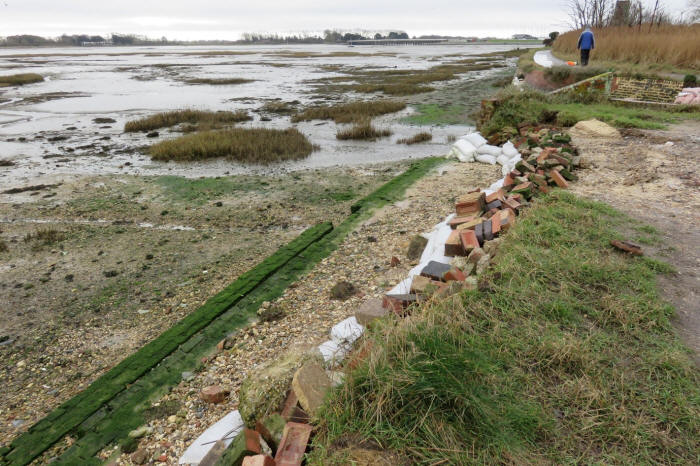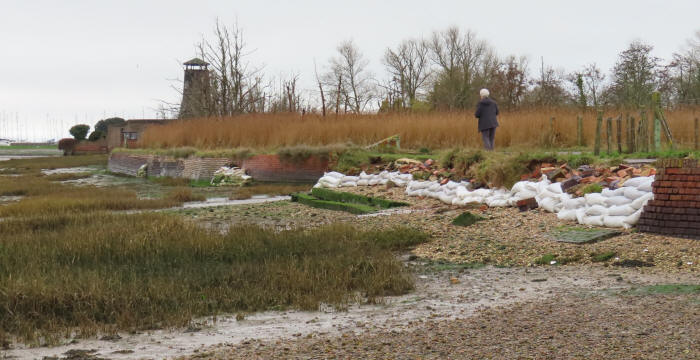According to a recent report by engineers Royal
HaskoningDHV, part of the sea wall at Langstone
between the mill pond and Wade Lane collapsed in
2022. The twin green lines in the picture are the
collapsed wall. The path on top of the wall is
expected to fail in 2025, while other parts of the
wall are also crumbling. This stretch of wall is
important as it keeps the level of water in the mill
pond at a suitable height for the water mill. It is
within the AONB and is a Site of Importance for
Nature Conservation (SINC).

A petition was started in August that year to raise
awareness of the need to save the footpath and the
mill pond. The petition said that without urgent
action by the relevant authorities, the path would
be gone and the mill pond abandoned to become a
tidal swamp, changing the shoreline forever and
destroying this unique environment. The original aim
of the petition was that all the sea walls should be
repaired.
Although a complete re-build of the old Victorian
walls has not been feasible, in January it was
announced that a compromise has been settled between
the many agencies involved: Havant Borough Council,
Hampshire County Council, Chichester Harbour
Conservancy, Natural England and the Environment
Agency This compromise will see the repair and
maintenance of most of the sea walls for at least
the next 25 years, thereby saving the mill pond for
the next generation. Where the walls have failed a
new footbridge will be erected to retain the
footpath in its current coastal position.
Intrigued by this we went to have a look, and took
some photographs, which are used in this article.
Confusingly, the collapse of the sea wall is beyond
the mill pond, while the path between the mill and
the pond seems to be in good condition.Search
Langstone Mill Pond for more information.

About the mills: Built
around 1800, the water mill operated two ten
foot wheels set at different heights. The higher of
the two was near the downstream end so it could be
used for longer as the tide came in, before both
wheels were submerged. The water mill is built
across a creek and is associated with a sea-wall
with sluices. The more distinctive black windmill
is an earlier structure, dating from 1720-1740.
Both mills are now private houses.
